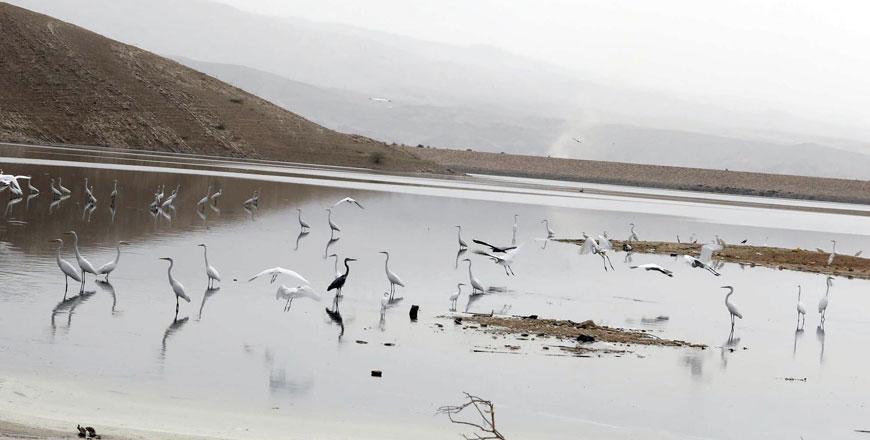You are here
Azraq Wetland Reserve rehabilitation helped attract variety of birds — RSCN
By Hana Namrouqa - Jul 05,2018 - Last updated at Jul 05,2018

Pumping water to different parts of the Azraq Wetland reserve has helped attract a large variety of bird species, especially migrants (Photo courtesy of RSCN)
AMMAN — The rehabilitation of the Azraq Wetland Reserve and the pumping of water to different parts of the oasis have diversified the bird species stopping at the nature sanctuary, especially migratory birds, a recent study showed.
During the past year, the environmental studies section at the Royal Society for the Conservation of Nature (RSCN), which created and manages the Kingdom’s nature reserves, evaluated and monitored breeding and migrant birds at the Azraq Wetland Reserve and Azraq mudflat, locally known as Al Qaa, to identify whether the oasis is receiving more or less birds, and analyse the driving factors.
The study found that pumping water to different parts of the reserve “has been very successful in increasing the attractiveness of the wetland to a large variety of bird species, especially migrants”.
Located 103 kilometres east of Amman, Azraq, (“blue” in Arabic), contains an oases, and a seasonally flooded marshland, where a variety of birds flock to each year, stopping for a short rest along their migration routes, according to the RSCN.
Azraq used to attract up to half-a-million migrating birds at a time before water pumping from the Azraq basin began in the 1980s. By 1993, the extraction of water expanded to the point that no surface water remained, virtually destroying its ecological value, experts said.
The study underlined that Azraq Wetland Reserve is “an extremely important site in the eastern desert of Jordan; it provides suitable habitats for a variety of breeding and migrant birds, and it is an exceptionally valuable tourist and educational resource in the area”.
“It is essential that this [pumping of water to different parts of the reserve] continue in order to preserve one of Jordan’s most important wetlands,” the study, a copy of which was e-mailed to The Jordan Times, indicated.
Azraq Wetland Reserve Director Hazem Khreisha said that the wetland’s open water area increased by 5 per cent last year.
“This is part of the rehabilitation of the oasis and it did actually result in attracting more birds to the oasis,” Khreisha told The Jordan Times, underlining that the annual water allocation to the wetland stands at around 500,000 cubic metres of fresh water to sustain the oasis.
According to the study, the wetland reserve remains a flagship reserve for the RSCN and continues to show the benefit of positive management in the partial restoration of the once magnificent Azraq oasis.
It also suggested that Azraq has “tremendous potential for attracting more birdwatchers and especially organised tour groups”.
Birds are normally attracted to the reflection of water across the country, according to researchers, who said that the number of migratory birds that stopover in Jordan every year depends on several factors, on top of which is the availability of water.
Jordan is home to 434 bird species, around 33 per cent of which are water birds, living on or around water. The 2018 waterbird census counted 143 species of waterbirds belonging to 23 families.
The census, which was first carried out in 1999, is implemented in January every year with the aim of identifying the number and species of waterbirds and their places of distribution. Local figures are used in international bird censuses used to identify the status of birds globally.
Related Articles
AMMAN — The population of waterbirds in Jordan’s eastern desert, one important route for migratory birds, is declining "remarkably" with the
AMMAN — Visitors to Azraq Wetland Reserve, one of Jordan’s oldest natural sanctuaries, this summer will have the chance to explore the wild
AMMAN — Eco-tourism and sustainable income generating projects will be developed at Azraq’s mudflat, which was recently added to the Azraq W

















